
Original Link: https://www.anandtech.com/show/1832
Lexar JumpDrive Secure II USB Flash Drive - Mac & PC Support
by Anand Lal Shimpi on October 21, 2005 1:59 AM EST- Posted in
- Memory
Earlier this month, we rounded up twenty USB flash drives and pitted them against each other in our first comparison of portable flash media. The results were surprising. We found that while many drives offered competitive read performance, the vast majority of them performed absolutely abysmally when it came to write performance.
All flash drives are not created equal, however, and we noted that many drives made use of premium controllers that resulted in not only high read speeds, but very high write speeds as well.
At the end of the day, Kingston and Lexar both walked away with an Editor's Choice award for absolutely stellar performance among the competition. Kingston's DataTraveler Elite and Lexar's JumpDrive Lightning both offered some of the fastest read speeds and consistently high write speeds as well, while the competition generally stumbled in one or both categories.
Unfortunately, despite the fact that the winners were clear, they were also the most expensive drives out of the roundup. At 512MB, the Kingston DataTraveler Elite was only around $10 more expensive than the next class of USB drives, but at 1GB, that gap jumped to at least $20. The award winners were also some of the bulkiest drives out there, so although they offered the best performance, they did have some noticeable drawbacks.
The very day that our first USB flash drive roundup was complete, Lexar released a new version of one of their USB flash drives, the JumpDrive Secure. Its successor, called the JumpDrive Secure II, promised better performance, a smaller form factor and, as its name implies, improved security software.
One of our biggest complaints in the first roundup was that while some drives offered added security through drive encryption, not a single one of the drives supported anything other than Windows XP when using their security software. Lexar has now addressed that complaint as the JumpDrive Secure II's encryption software now supports both Windows XP and OS X.
So today, we add to our growing database of USB flash drive devices with Lexar's JumpDrive Secure II.
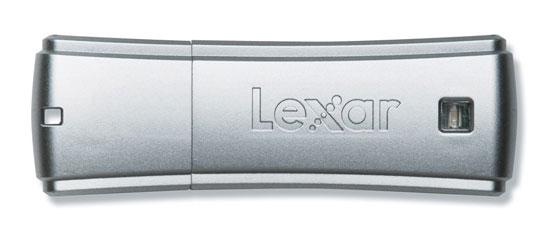
| Lexar JumpDrive Secure II | |
| Sizes Available | 256MB - 2GB |
| Lanyard Included | No |
| USB Extension Cable Included | No |
| Data Encryption | Yes (Windows & OS X only) |
| Password Protection | Yes (Windows & OS X only) |
| Secure + Public Partitions Simultaneously Accessible | Yes |
| Warranty | 2 years |
The Drive in Hand
Although its name indicates otherwise, one of the most noticeable features about the JumpDrive Secure II is its sleek construction. Lexar has quite possibly put together the best form factor for those who want a reasonably sized device that isn't easy to lose, yet don't want the bulkiness of something like a DataTraveler Elite or Lexar's own JumpDrive Lightning.
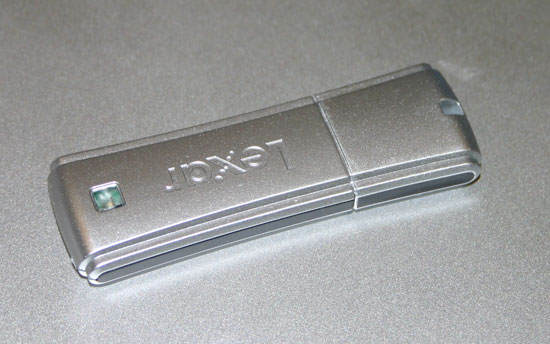
The drive itself is about average length, but the biggest selling point of the JumpDrive Secure II's form factor is its thickness - or relative lack thereof. The drive is reasonably thin, and its design minimizes the thickness to make the drive appear smaller than it actually is. At its thickest point, the JumpDrive Secure II is comparable to SanDisk's cruzer mini.
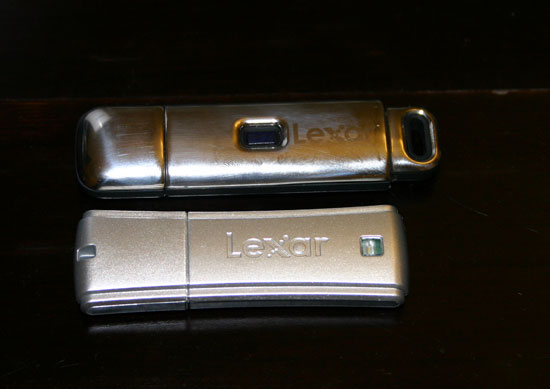
Lexar's JumpDrive Lightning (top) vs. Lexar's JumpDrive Secure II (bottom)
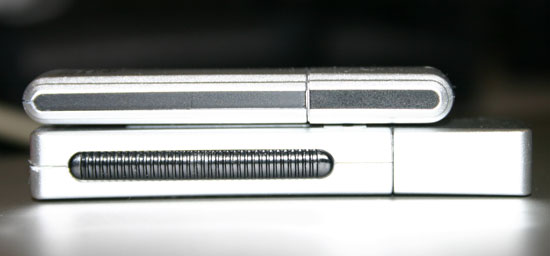
Lexar's JumpDrive Secure II (top) vs. Kingston's DataTraveler Elite (bottom)
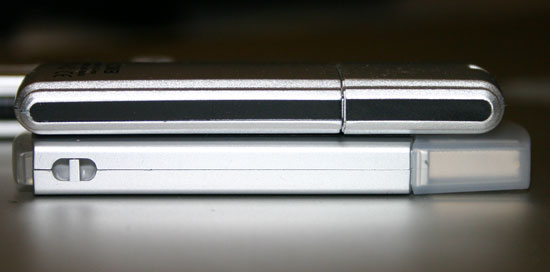
Lexar's JumpDrive Secure II (top) vs. SanDisk's cruzer mini (bottom)
But, we'll get to that in a moment. First, it is time to take a look at Lexar's new Windows XP/OS X security software.
Lexar's New Security Software
As its name implies, the major focus of the JumpDrive Secure II is its security software. To be honest though, there is no more security that the JumpDrive Secure II offers over the JumpDrive Lightning; they both use the same general 256-bit AES encryption software. Instead of more security, the biggest improvement that the JumpDrive Secure II offers is an updated security application, one that happens to work in both Windows XP and OS X.
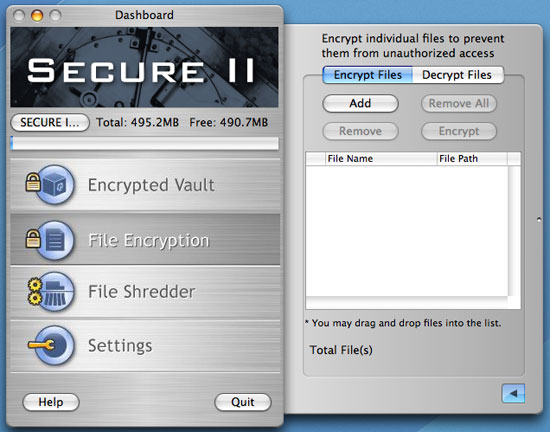
Lexar's Secure II Dashboard application, running in OS X 10.4.2
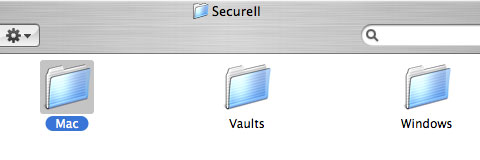
The JumpDrive Secure II comes with both Mac and Windows executables.
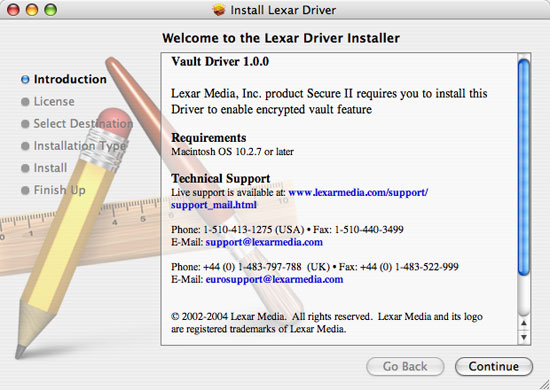
A driver must be installed under OS X in order to use the application.

An encrypted vault is nothing more than an encrypted file that is stored on the publicly accessible JumpDrive Secure II in the Vaults directory. You can create as many vaults as you'd like, and each one gets their own drive letter and can be mounted/unmounted at any time. To the OS, an encrypted vault looks just like a regular drive while mounted, and can be written to and treated just like a regular drive. The only difference is that anything written to that drive is encrypted using Lexar's 256-bit AES algorithm.
Using Encrypted Vaults
We created an encrypted vault using Lexar's new software. The process was quite simple:
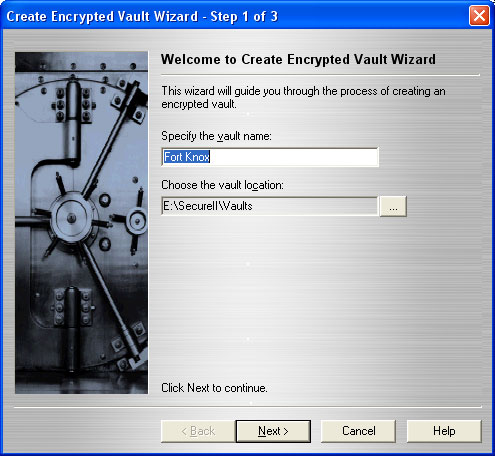
Creating an Encrypted Vault under Windows XP
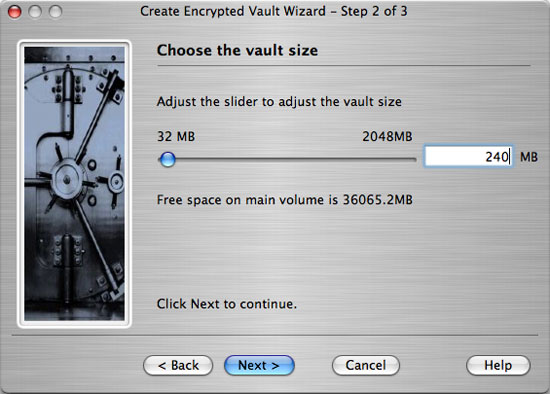
Creating an Encrypted Vault under OS X
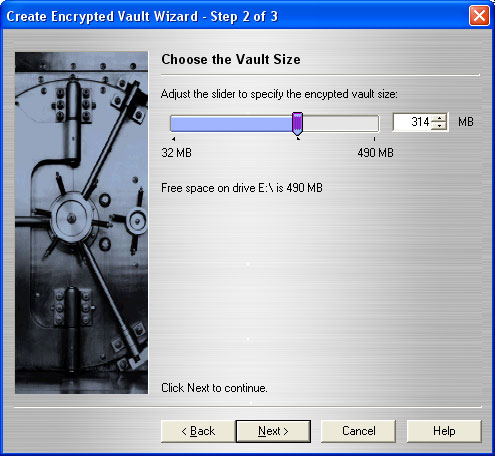
The same dialog box under Windows
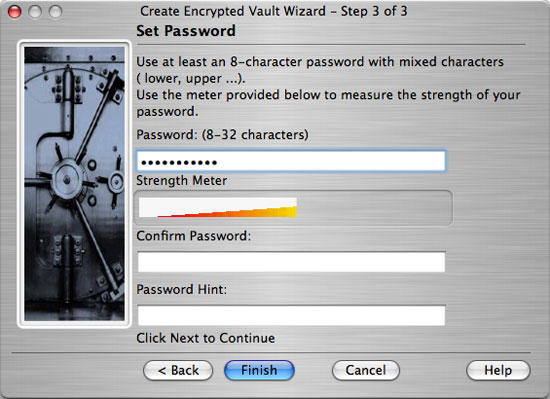
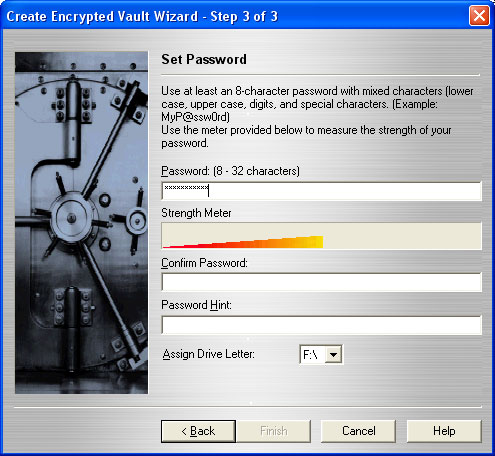
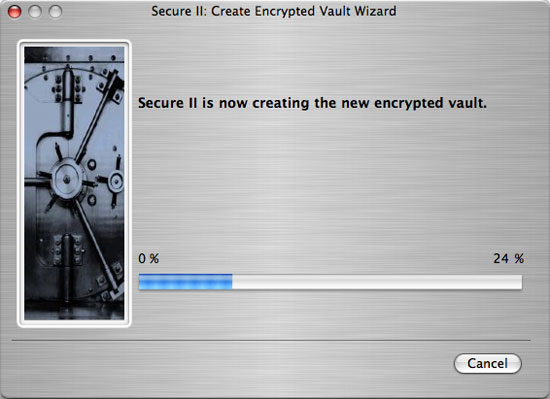
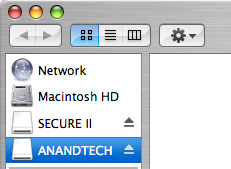
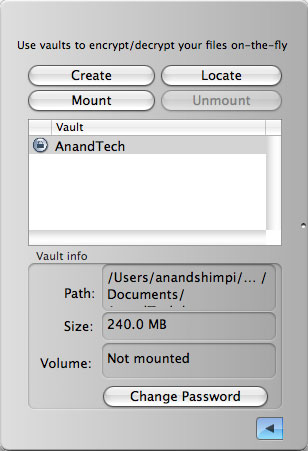
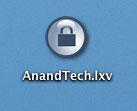
The vault that we just created

Deleting a vault results in this message being displayed under Windows XP.
| 0.5KB | 32KB | 256KB | 2048KB | 65536KB | ||||||
| Read | Write | Read | Write | Read | Write | Read | Write | Read | Write | |
| Secure | 0.9 | 5 | 9078 | 287 | 10112 | 1852 | 10103 | 4403 | 9830 | 6554 |
| Public | 0.4 | 58 | 8779 | 3147 | 11964 | 7930 | 12425 | 9216 | 12015 | 9830 |
Interestingly enough, performance went up when looking at the 0.5KB and 32KB read tests, but for the most part, the encrypted vault is noticeably slower than accessing the public, unencrypted drive.
Read performance is quite respectable when accessing the encrypted vault, generally only 1 - 3MB/s slower than normal, but write speed is where you truly lose a lot of performance when enabling Lexar's 256-bit encryption. While a 256KB file can be written at a rate of 7.9MB/s on an unencrypted volume, writing the same size of file to an encrypted vault drops performance down to less than 2MB/s.
Lexar's new Dashboard also lets you encrypt individual files anywhere on your PC, as well as shred files so that they cannot be recovered through normal means of recovery after being deleted.
The Test
| CPU: | AMD Athlon 64 X2 4200+ (2.2GHz/512KBx2) Intel Pentium 4 530 (3.0GHz) |
| Motherboard: | ASUS A8N-SLI Deluxe Intel D955XCSLKR |
| Motherboard BIOS: | ASUS: Version 1013 Dated 08/10/2005 |
| Chipset: | NVIDIA nForce4 SLI Intel 955X |
| Chipset Drivers: | nForce4 6.66 Intel 7.0.0.1025 |
| Memory: | OCZ PC3500 DDR 2-2-2-7 Crucial DDR2-667 5-5-5-15 |
| Video Card: | NVIDIA GeForce 7800GTX |
| Video Drivers: | NVIDIA ForceWare 78.01 |
| Desktop Resolution: | 1280 x 1024 - 32-bit @ 75Hz |
| OS: | Windows XP Professional SP2 |
| Benchmarking Software: | SiSoft Sandra 2005 SR2a-1060 |
Read Performance
Our read performance investigations start out with small 512-byte files, then scale up to 32KB, 256KB, 2MB and 64MB file sizes.
512-byte File Read Performance
As we found in our first roundup, 512-byte read performance of most of these drives ends up being relatively similar. The exception continues to be Lexar's JumpDrive Lightning, although the Secure II doesn't seem to inherit that gene.
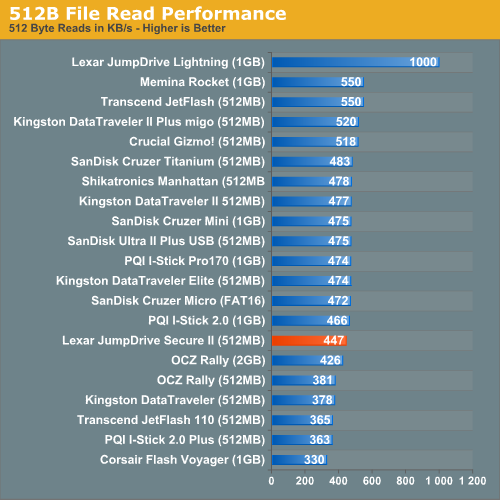
32KB File Read Performance
At 32KB file sizes, the JumpDrive Secure II starts to give us an indication of how we should expect it to perform. At 8.8MB/s, it ends up being barely faster than Crucial's Gizmo! and slower than Corsair's Flash Voyager.
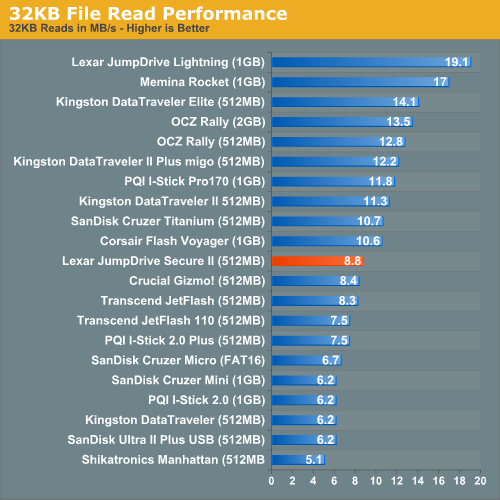
256KB File Read Performance
The larger the file size, the higher the transfer rate, and here, we see the Secure II distance itself from the Crucial Gizmo! slightly, while still falling significantly behind the Flash Voyager.
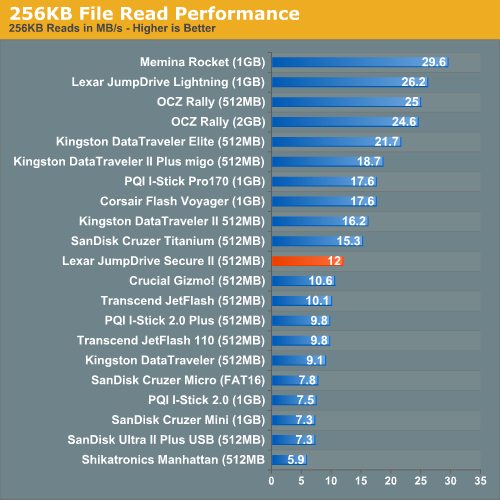
2MB File Read Performance
At 12.4MB/s, the JumpDrive Secure II ends up being too slow for the 2nd performance tier, and slightly faster than the top of the 3rd performance tier, it truly is smack in the middle.
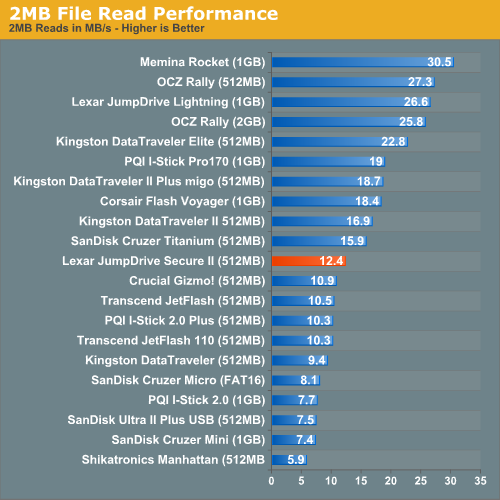
64MB File Read Performance
Performance seems to have peaked at the 2MB file size because the Secure II actually drops slightly in performance in our 64MB file read test.
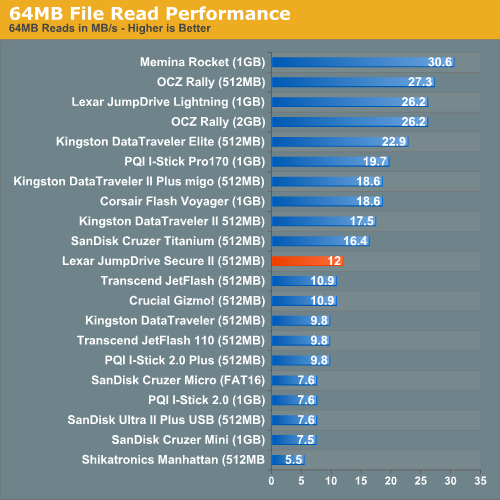
Write Performance
For the write performance tests, we used the exact same file sizes, but instead of reading them from the drives, they are written to the drives.
Every time you write to a NAND flash block, you must first erase that block, thus it should be no surprise that NAND flash memory writes a lot slower than it reads. So, don't expect to see the same performance levels that we saw with the read tests.
512-byte File Write Performance
Now looking at write performance, we start over once again with a 512-byte test, which the JumpDrive Secure II does extremely well. Lexar seems to have found the key to good write performance, and has carried that on to the new JumpDrive Secure II.
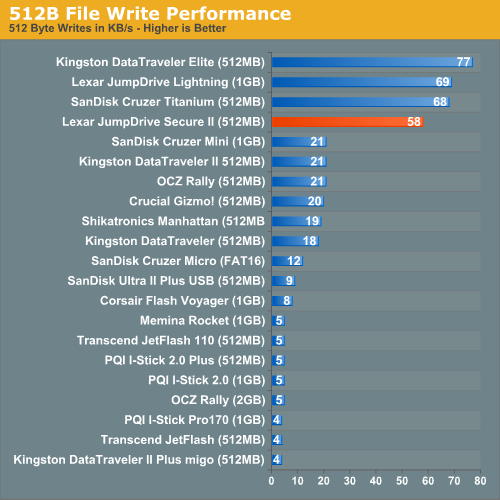
32KB File Write Performance
At 32KB, the Secure II still manages to stay in the top 4 performers, performing only 0.4MB/s slower than the JumpDrive Lightning.
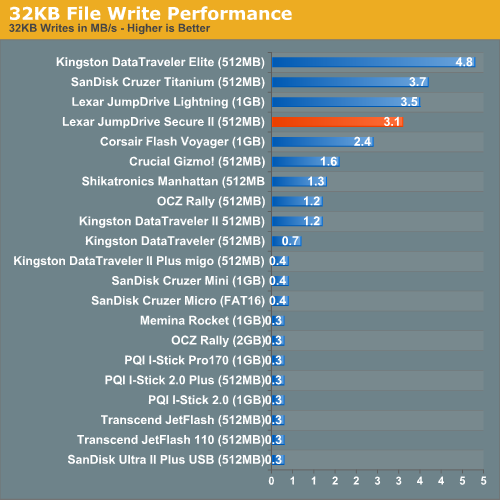
256KB File Write Performance
With larger file sizes, Corsair jumps ahead of the Secure II, but the Lexar drive continues to do reasonably well.
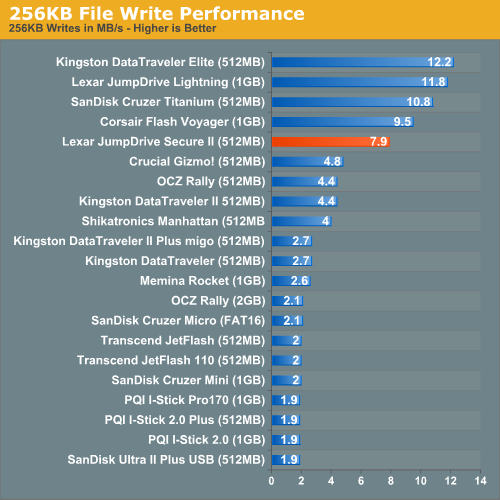
2MB File Write Performance
Much like we saw in the read performance, the write performance of the JumpDrive Secure II appears to plateau around 2MB file sizes, with performance climbing slightly up to 9.2MB/s.
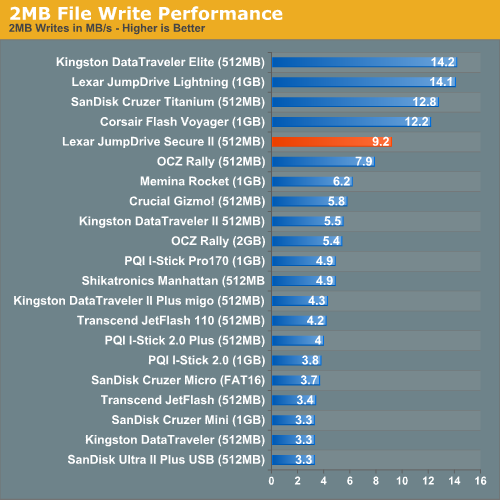
64MB File Write Performance
For our final test, we see that the JumpDrive Secure II truly doesn't get much faster as we look beyond its 2MB write performance. At 9.8MB/s, the drive is competitive with OCZ's Rally, but no longer appears in the top 5 of the performers.
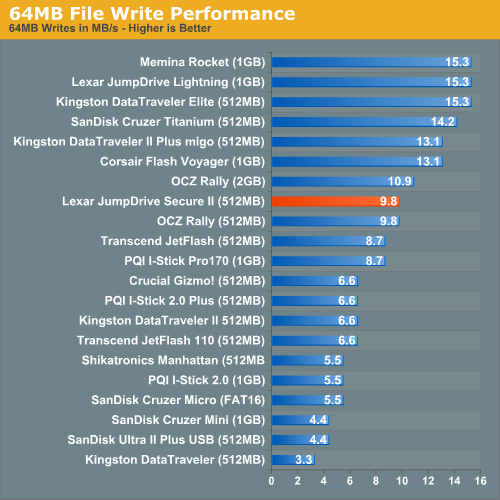
Final Words
In terms of form factor, the JumpDrive Secure II is excellent. The drive is light, average in length, but far better than average in thickness, making the drive seem a lot smaller than it is. The construction is excellent and overall, we were pleased with the appearance of the drive.
Unfortunately, the read performance of the drive was average at best. And while the drive offered strong write performance, it did so at the same price as drives that offered much better read and competitive write performance.
The Dashboard application that Lexar provides with the JumpDrive Secure II is quite nice, and we applaud Lexar for supporting both Windows XP and OS X. The application itself is quite possibly the only security application that we could see ourselves using on a regular basis with any USB flash drive. Aside from user preference about the way that the application looks, its functionality is spot on, with the ability to mount and unmount multiple independent encrypted volumes. Lexar has achieved security with USB flash drives perfectly.
However, it seems that with the JumpDrive Secure II, you are paying quite a bit for the software, as the drive itself ends up selling for prices similar to the highest end drives from Lexar and Kingston. If the security is worth it to you, then by all means, go for it; but honestly, we think that the JumpDrive Secure II is priced a little too high to warrant a recommendation. At 512MB, the Secure II is reasonably competitive price-wise, but the 1GB version is simply priced too high for a recommendation.
What we'd like to see is an updated JumpDrive Lightning drive with the form factor of the Secure II, as well as the new Dashboard application. We'd gladly pay for something that offered us performance, security and the form factor, but with the JumpDrive Secure II, we only get two out of the three and that just doesn't cut it.







